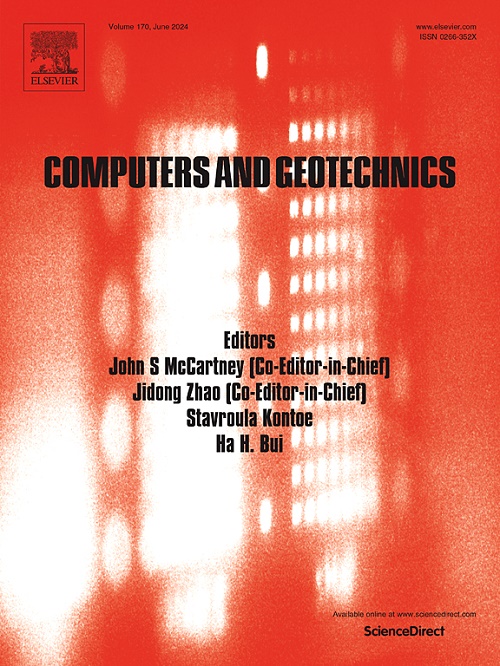Consolidation analysis of composite ground with stone column using a composite column-soil element model coupled seepage characteristics
IF 5.3
1区 工程技术
Q1 COMPUTER SCIENCE, INTERDISCIPLINARY APPLICATIONS
引用次数: 0
Abstract
Based on the permeability tests of soil-stone mixtures, a composite column-soil element encompassing the deformation and seepage characteristics of soil-stone mixtures was established by deploying the composite element method. This simplifies the complexity of finite element analysis for group column composite foundations, thereby retaining the column spacing, complex deformation, and seepage characteristics between columns and soil in the analysis. The accuracy of the formulated model was corroborated using the results of in-situ core sampling and load tests of vibro-replacement stone columns by considering the calculated outcomes of the consolidation model, developed using the composite column-soil element method for multi-column composite foundations. In addition, the influence of the depth of stone column installation, the soil content within the columns, and the amount of free gravel on the consolidation characteristics were examined via detailed computational analysis. The results indicate that the maximum lateral displacement of the natural soil foundation lessened from about 15 mm to 8 mm following the installation of stone columns. When the column depth was 30 m, the consolidation degree approached 52 % after six days of loading. The overall consolidation drainage rate was satisfactory, with a 15 % soil content within the columns. However, drainage performance was completely lost when the soil content increased to 25 %. Also, the amount of underlying free gravel posed minimal impact on the load-bearing and consolidation functions of the columns.
求助全文
约1分钟内获得全文
求助全文
来源期刊

Computers and Geotechnics
地学-地球科学综合
CiteScore
9.10
自引率
15.10%
发文量
438
审稿时长
45 days
期刊介绍:
The use of computers is firmly established in geotechnical engineering and continues to grow rapidly in both engineering practice and academe. The development of advanced numerical techniques and constitutive modeling, in conjunction with rapid developments in computer hardware, enables problems to be tackled that were unthinkable even a few years ago. Computers and Geotechnics provides an up-to-date reference for engineers and researchers engaged in computer aided analysis and research in geotechnical engineering. The journal is intended for an expeditious dissemination of advanced computer applications across a broad range of geotechnical topics. Contributions on advances in numerical algorithms, computer implementation of new constitutive models and probabilistic methods are especially encouraged.
 求助内容:
求助内容: 应助结果提醒方式:
应助结果提醒方式:


